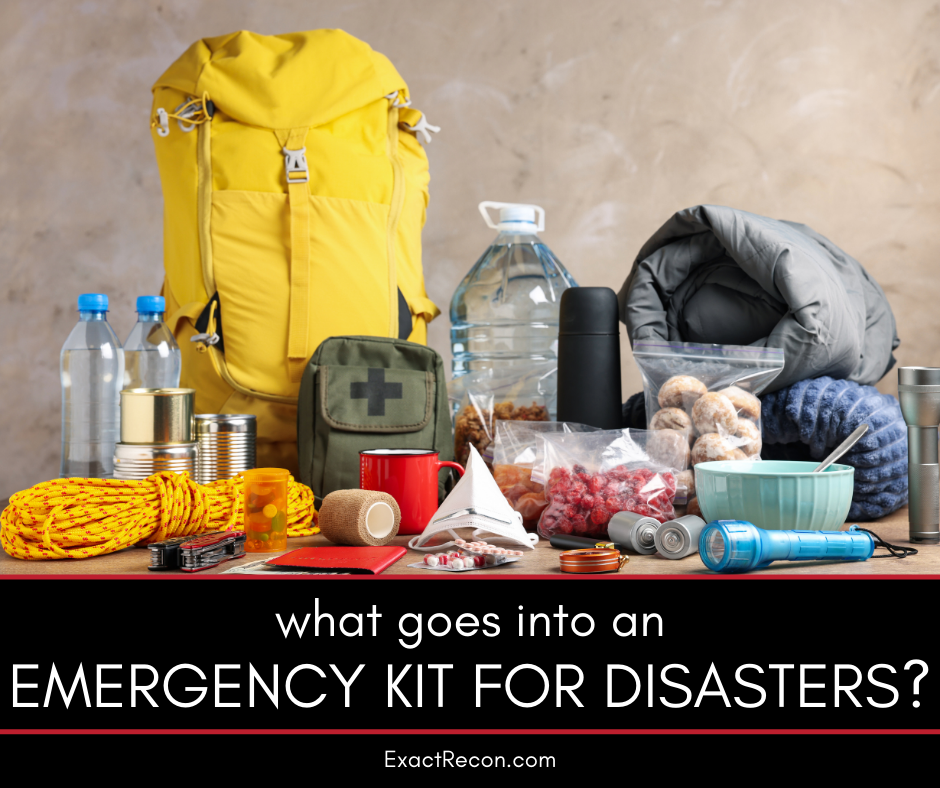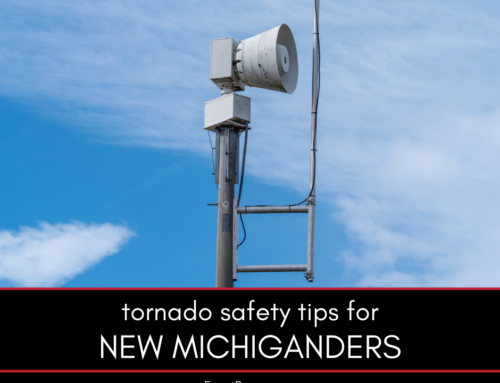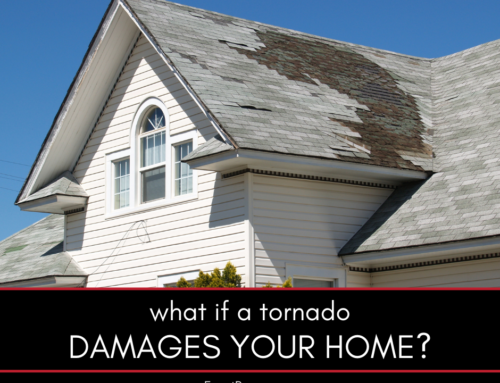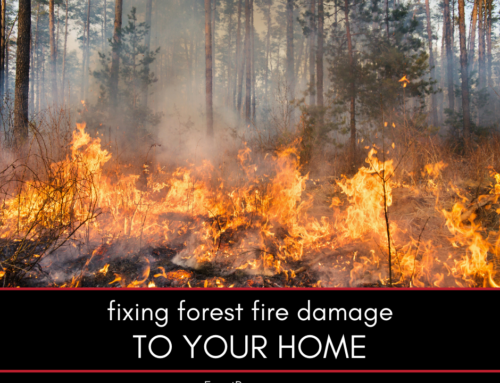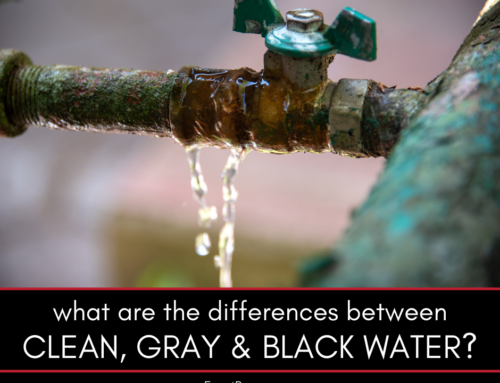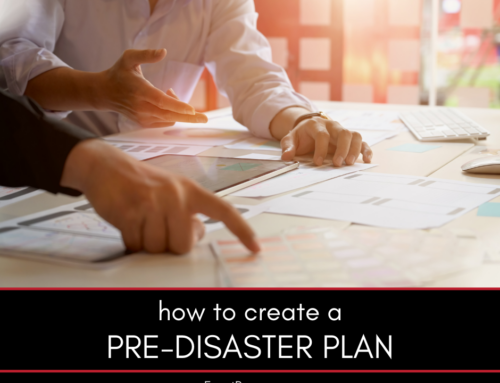When disaster strikes, having a well-prepared emergency kit can make all the difference. Whether it’s a natural disaster, fire, or prolonged power outage, your emergency kit ensures that you and your family have the supplies needed to stay safe and comfortable. This guide explains what to include in your emergency kit and how to tailor it to your household’s specific needs.
What Goes in an Emergency Kit for Disasters?
An emergency kit contains essential items to help you survive during and after a disaster. This guide covers:
- Food and water supplies
- First aid and medical necessities
- Tools and safety equipment
- Important documents and personal items
- Tailoring your kit to specific needs
Here’s a closer look at each.
Food and Water Supplies
Food and water are the most critical components of any emergency kit. Pack non-perishable food items that are easy to prepare and require no refrigeration, such as canned goods, energy bars, and dried fruits. Aim for a three-day supply per person, including at least one gallon of water per day for drinking and sanitation.
Don’t forget manual tools like a can opener, as you may not have access to electricity. For longer emergencies, consider water purification tablets or a portable filtration system to ensure access to clean water.
First Aid and Medical Necessities
A comprehensive first aid kit is essential for treating minor injuries and managing health conditions during a disaster. Your kit should include items like:
- Adhesive bandages, gauze, and medical tape
- Antiseptic wipes and antibiotic ointment
- Tweezers, scissors, and gloves
- Pain relievers and anti-inflammatory medication
- Prescribed medications (at least a seven-day supply)
If anyone in your household has specific medical needs, such as insulin or an EpiPen, include those as well. Store medications in a waterproof container to keep them safe.
Tools and Safety Equipment
Basic tools and safety gear can help you navigate difficult situations and make minor repairs. Include the following:
- Flashlights with extra batteries
- Multi-purpose tool or Swiss Army knife
- Duct tape and rope
- Fire extinguisher
- Whistle to signal for help
For power outages, pack a portable phone charger or solar charger. A battery-powered or hand-crank radio is also invaluable for staying informed about emergency updates.
Important Documents and Personal Items
Keep copies of important documents in a waterproof container to streamline recovery after a disaster. Include:
- Identification cards and passports
- Insurance policies for your home, health, and vehicles
- Property deeds and mortgage documents
- Emergency contact numbers
Additionally, pack personal items like extra clothing, blankets, and hygiene products such as soap, toothbrushes, and sanitary supplies. Comfort items, like small toys or books, can also help ease stress, especially for children.
Tailoring Your Kit to Specific Needs
Every household has unique needs, so customize your kit accordingly. If you have pets, include pet food, water, and supplies like a leash or carrier. For infants, pack formula, diapers, and baby wipes. If you live in an area prone to specific disasters, such as hurricanes or wildfires, include relevant items like sandbags or respiratory masks.
Regularly review and update your emergency kit to ensure all supplies are fresh and meet your current needs. Rotate food and water supplies as they approach expiration, and check that batteries and medications are still usable.
When to Call Exact Recon for Post-Disaster Assistance
Even the best emergency kit can’t prevent damage to your home during a disaster. At Exact Recon, we specialize in disaster cleanup and restoration services. Whether you’re dealing with water damage, fire damage, or storm damage, our team is here to help.
We’ll work with your insurance company to simplify the claims process, ensuring a smooth recovery for your home and family.
FAQ About Emergency Kits for Disasters
Check out these commonly asked questions about emergency kits. If you don’t see your question here, please call our office and we’ll find you the answers you need.
How Often Should I Update My Emergency Kit?
Update your kit every six months or whenever there’s a change in your household, such as a new baby or pet. Replace expired items promptly.
Where Should I Store My Emergency Kit?
Store your kit in an easily accessible location, such as a hallway closet or garage. Ensure every family member knows where to find it.
How Much Water Should I Include in My Kit?
Include at least one gallon of water per person per day for three days. If space allows, store additional water for longer emergencies.
What If I Have Limited Space for a Kit?
Focus on essentials like water, food, and medications. Use compact storage solutions, such as under-bed containers or stackable bins, to maximize space.
Should I Include Cash in My Emergency Kit?
Yes, include small denominations of cash in case ATMs or card readers are unavailable during an emergency.
Building an emergency kit is a vital step in disaster preparedness. With the right supplies, you can ensure your family’s safety and comfort during challenging times. For post-disaster assistance, trust Exact Recon to restore your home and help you recover.
Do You Need a Disaster Remediation Expert in Washtenaw County or Jackson County?
If your home has already been damaged, we can help. Check out our services and get a free disaster remediation quote today. We offer:
- Water damage restoration
- Fire damage restoration
- Mold removal and remediation
- Fire and smoke restoration
- Sewer cleanup and disinfecting
- Reconstruction
- Wind and storm damage repair


